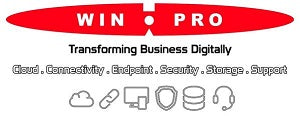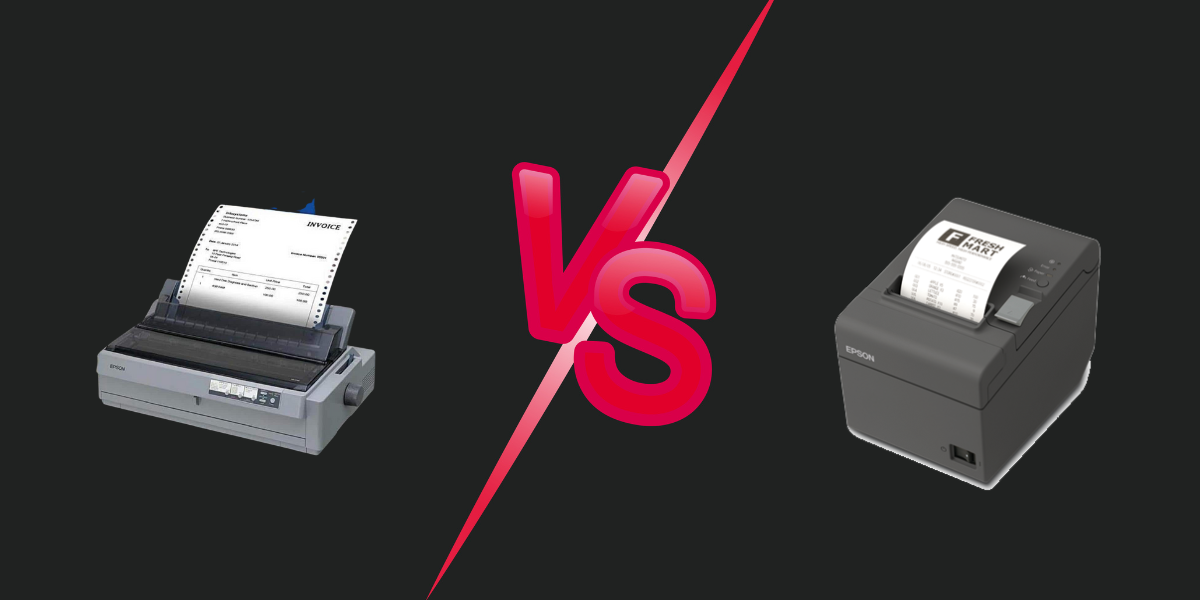Point of Sale (POS) printers are an essential component of any retail business. They are used to print receipts, invoices, and other important transactions. There are two main types of POS printers: Dot Matrix and Thermal. In this article, we'll examine both types of printers in more detail and contrast their benefits, drawbacks, and when to consider each one.

I. Dot Matrix POS Printers
Dot matrix printers are an older technology that has been around for many years. They work by striking an ink-soaked ribbon against the paper to produce a print. They are known for their affordability and versatility, making them a popular choice for small and medium-sized businesses.
Advantages of Dot Matrix Printers:
-
Affordable: Dot matrix printers are typically less expensive than thermal printers, making them a more budget-friendly option for small businesses.
-
Durable: Dot matrix printers are built to last and can withstand rough handling and heavy usage.
-
Versatile: They can print on a variety of paper types and thicknesses, including multi-part forms.
Limitations of Dot Matrix Printers:
-
Noisy: Dot matrix printers are known for being loud and can be disruptive in a quiet office environment.
-
Slow: They are slower than thermal printers and can take longer to print receipts and other transactions.
-
Poor print quality: The print quality of dot matrix printers is not as sharp or clear as thermal printers.
When to consider a dot matrix POS printer:
-
If you are on a tight budget and need an affordable printing solution.
-
If you need to print on multi-part forms.
-
If you need a printer that can withstand heavy usage and rough handling.

II. Thermal POS Printers
Thermal printers are a newer technology that use heat to produce prints. They are known for their speed, quiet operation, and high-quality print output. Thermal printers are commonly used in retail and hospitality environments.
Advantages of Thermal Printers:
-
Fast: Thermal printers are faster than dot matrix printers and can print receipts and transactions quickly.
-
Quiet: They operate quietly, making them ideal for use in a quiet office environment.
-
High-quality print output: Thermal printers produce sharp and clear prints with a high resolution.
Limitations of Thermal Printers:
-
Higher cost: Thermal printers are more expensive than dot matrix printers, making them a more costly option.
-
Limited paper options: Thermal printers can only print on specific types of paper and cannot print on multi-part forms.
When to consider a thermal POS printer:
-
If you require high-quality print output and speed.
-
If you need a quiet printing solution.
-
If cost is not a major concern and you are looking for a high-end printing solution.
III. Comparison of Dot Matrix and Thermal POS Printers
There are several features that differentiate both types of printers. One of the main ones is that the thermal one has a more modern technology than the matrix one: while the first one uses heat through a thermal head to record the data on the paper, the second one uses a head that impacts with an ink ribbon on the paper to achieve printing. That is, the matrix needs ink, and the thermal does not.
Another difference is that the thermal one works at a higher speedthan the matrix one. Also, the latter is louder. However, the receipts printed by the matrix ones last longer than those originated by the thermal ones.
As for the costs generated by both peripherals, both are quite cheap. But dot matrix printer materials - ink cartridges - can be a bit more expensive than the heat-sensitive paper needed for thermal printers.
Here you can see a summary of the differences between thermal and matrix printers:
| Characteristics | Thermal | Matrix |
| Use ink | X (NO) | ✓ (YES) |
| Silent | ✓ (YES) | X (NO) |
| Lasting impression | X (NO) | ✓ (YES) |
| Technology | Heat reactive paper | Head that impacts with an ink ribbon on the paper |
| Print speed | Fast | Slow |
| Material cost | Cheap | Slightly higher |
| Colour capability | Most models print in only black,higher-end ones offer multicolour printing | Most models print in black and red , some can print graphics. |
Recommended uses thermal printers
The printing of tickets and labels is necessary in many different areas, although it will be necessary to choose one printer or another depending on its purpose. As the text of thermal prints lasts only a short time on paper, it is better to implement this type of printer in supermarkets and buses, for example. These receipts have a short life, so it is not a problem that they end up being deleted. Another alternative they offer is the printing of bracelets, which can be used in hospitals, concert halls or theme parks, among others, as well as the printing of mailing labels, very useful for e-commerce.
All these targets need only black monochrome printing, no text or images using different colors, so a thermal printer is suitable.
They are also suitable for places facing the public since their presence is not annoying. On the other hand, it is not recommended to use a thermal printer in spaces with high temperatures, since the thermosensitive paper can end up damaged.
Recommended uses matrix printers
On the other hand, matrix ones are more suitable for prints that need to last a long time, such as receipts for purchases with a guarantee: technology, automobiles, etc. That is, they are useful when printing invoices, as in the accounting departments of SMEs.
It is better to avoid installing it where customers will be present, as the printing produces a noise that can be annoying for them.
Last but not least, both Dot Matrix and Thermal POS printers have their pros and cons, and the type of printer you choose will depend on your specific business needs. It is important to weigh the benefits and drawbacks of each type of printer before making a decision.












